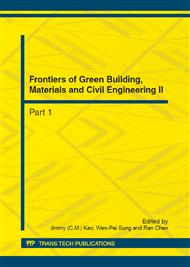p.780
p.785
p.791
p.796
p.801
p.805
p.810
p.814
p.822
Hybrid Control System for Seismic Protection of the Benchmark Model
Abstract:
In this paper, a 20-storey Benchmark model is used to compare the effects of various control systems, including Damper control system, TMD control system and Hybrid control system. In the course of the optimization, the displacement reducing coefficient (DRF) and the storey drift reducing coefficient (SDRF) are used as the objective functions to optimize the control parameters based on Genetic Algorithm (GA). Numerical results prove the advisability of the Hybrid control system of dampers and TMD, which can not only decrease the floor displacement, but also improve the mutation of the storey drift.
Info:
Periodical:
Pages:
801-804
Citation:
Online since:
August 2012
Authors:
Keywords:
Price:
Сopyright:
© 2012 Trans Tech Publications Ltd. All Rights Reserved
Share:
Citation:


